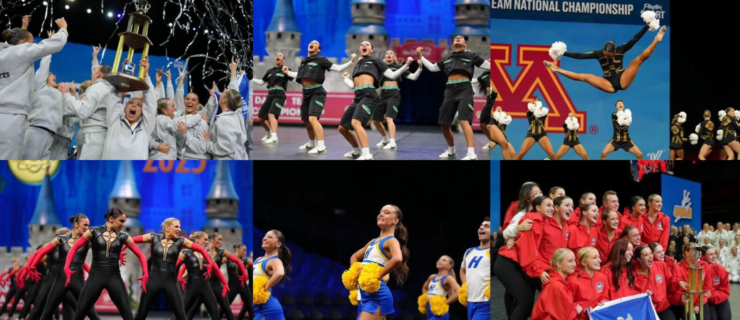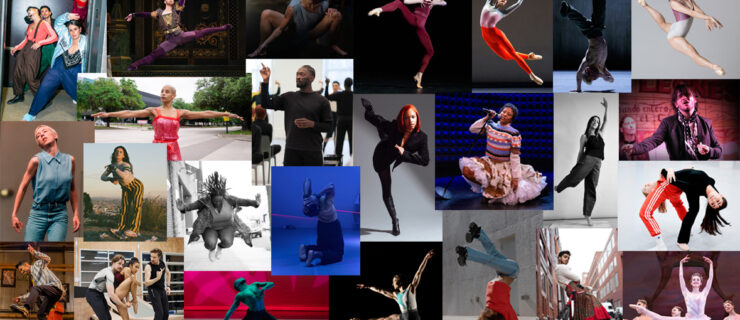Pros and Cons of Starting Your Competition Season With Regionals
Advantages
Convenience
Nationals are almost always based in large cities, which can mean long travel times and overnight accommodations. Regional competitions, on the other hand, are usually held in scores of smaller cities, making finding one near your hometown pretty easy. The shorter commute is also kinder to your wallet. Sarah Blakley, owner and director of Hype Dance Studio in Chico, CA, says she chooses regional competitions according to her schedule and where they’re located. If one regional competition isn’t coming to a city near you, another one probably is.
Effective Practice Time
Competitions often use the same score sheet for Regionals and Nationals, so the comments that you receive at the former should help prepare you for the latter.
Exposure and Education
At regional competitions, dancers are exposed to other studios and teams in their area. Krista McDevitt, dance studio and competitive team director of the Legacy National Dance Team in Flemington, NJ, takes her dancers to Regionals because it’s “a fun way to meet other dancers and feel good about themselves.” When organizing the Midwest regional competitions for Universal Dance Association, territory manager Paula Hess encourages dancers to “actively watch other dancers perform. You’ll learn what their strengths and weaknesses are and what they do to outshine any deficits they have. It’s one of the most educational aspects of participating in a regional competition.”
Building Confidence
Regional competitions are an excellent alternative for younger dancers or new dancers who may not be ready to face the pressure of a national competition. Larkin Dance Studio in Maplewood, MN, takes its younger dancers to Nationals every other year. Regionals have become a place for them to build up their confidence in the interim year. “Dance is a performing art, and while classroom time is essential, students need to feel the demands, excitement and reality of what it means to perform in front of an audience,” says Dance Warehouse teacher Anna Itman, from Chanhassen, MN. “I enjoy bringing my dancers to Regionals, because it reinforces concepts and feedback that they get in the studio,” she says.
Awards
Perhaps the most obvious reason for attending Regionals is qualifying for Nationals. By researching ahead of time, you will discover that different Regionals offer various rewards. Most give the opportunity to qualify for their Nationals. Others reward individuals and groups with scholarships to schools and conventions, and some even award cash prizes. At Headliners’ Regionals, for instance, you have the opportunity to qualify to be a part of Team USA at the International World Showdance and Hip Hop Championships. Starpower National Talent Competition, with 35 regional competitions, prides itself on a “fun and spirited atmosphere” during awards, says director Gary Pate, whose company not only hands out trophies, scholarships and cash, but also offers numerous creative awards from “Best Costume” to “Most Photogenic” to “Most Entertaining.”
Disadvantages
Confusion
Attending several competitions can cause confusion regarding what judges are looking for. Lake Forest Dance Team in Lake Forest, IL, used to attend several different Regionals before attending Nationals. Coach Char Ash says her team would become frustrated because each regional competition “had a different set of standards—the feedback became confusing.” Now the team chooses to attend regional competitions associated with one national competition. “When judging is more consistent from one contest to the next, the feedback is of greater value to our growth as a team,” she explains.
Low Participation
Because regional competitions are in smaller cities than Nationals, you may run into occasions when there aren’t enough competitors in a specific division. Jamie Jordan, owner of JAMS Dance Studio in Hendersonville, TN, often finds it difficult to locate regional competitions where her youngest group of hip-hop dancers has other studios to compete against. Blakley agrees: “Because the regional competitions only apply to that particular region, there are too many categories for the number of dances entered, therefore creating little competition within each category.”
Building False Hope
Although Regionals prove to be good practice for Nationals, keep in mind it is just that—practice. Kevin Mathis, owner of M2 Dance Center in St. John, IN, says that just because you do well at Regionals doesn’t mean you’ll take top honors at Nationals, where competition is much more fierce. On the other hand, a low score at Regionals doesn’t mean you won’t do well at Nationals. “Don’t go to Regionals to win. If you are truly using Regionals as a springboard for Nationals, then your main concern should be getting the best feedback you can on your routine,” says Dave Sanchez, a Nationals/Regionals judge.
Creating a First Impression
The biggest fear for many dancers is creating an impression that will follow them to Nationals. Rick DeLillo, the coach of Don Bosco Dance Team in Ramsey, NJ, carefully weighs the pros and cons each year before attending regional competitions. “If a team does not perform well, the fear is that you’ve created a first impression that may carry over into Nationals for the audience, judges and for the dancers themselves,” even if only a portion of them will be the same. The Eden Prairie Pom Squad in Eden Prairie, MN, which has a championship history, saves its jazz routine for Nationals, keeping everyone in suspense. As an option, Sanchez suggests, “if you do have elements of your routine that only work with a surprise factor, or are better with a surprise factor, I would just change that portion for the regional event.”



